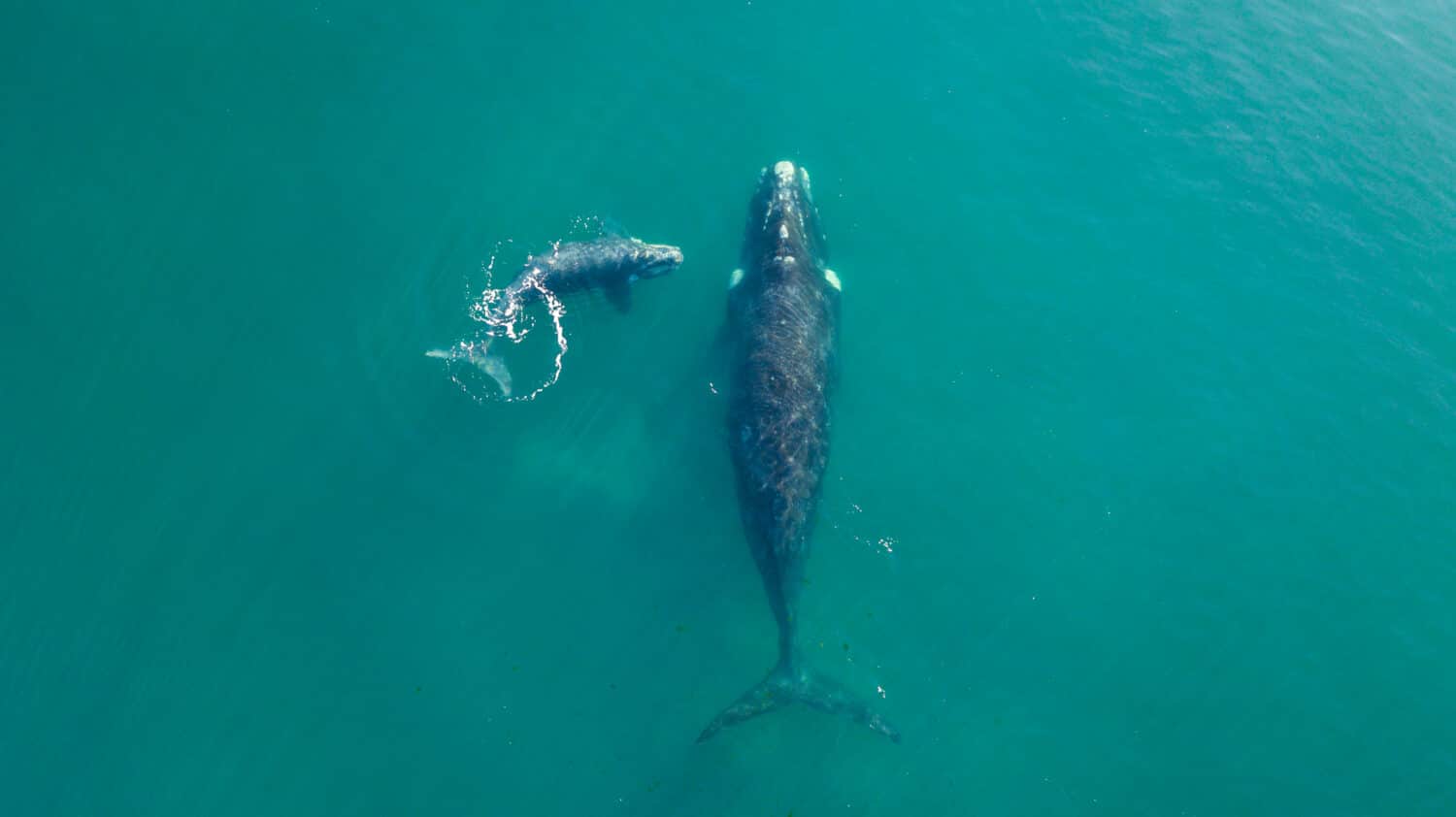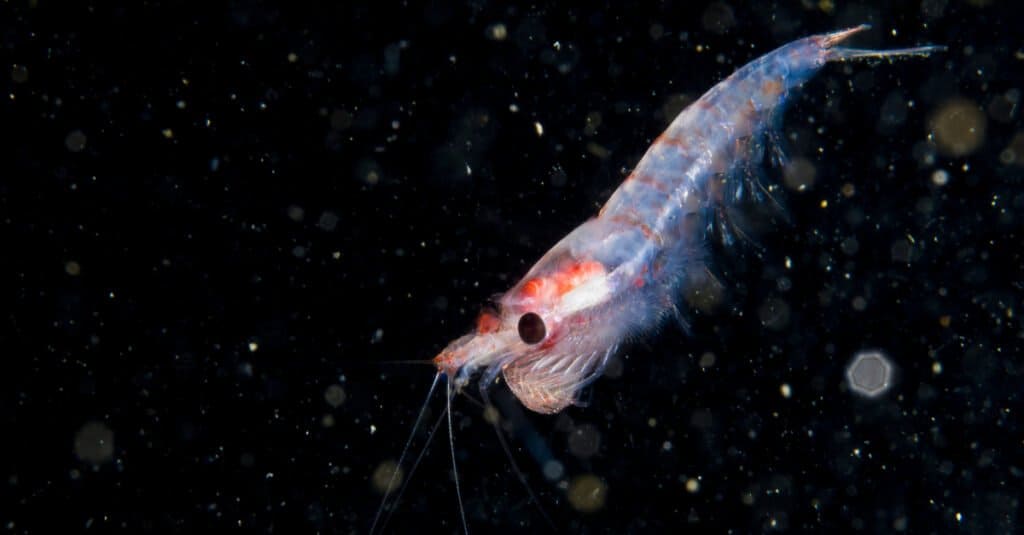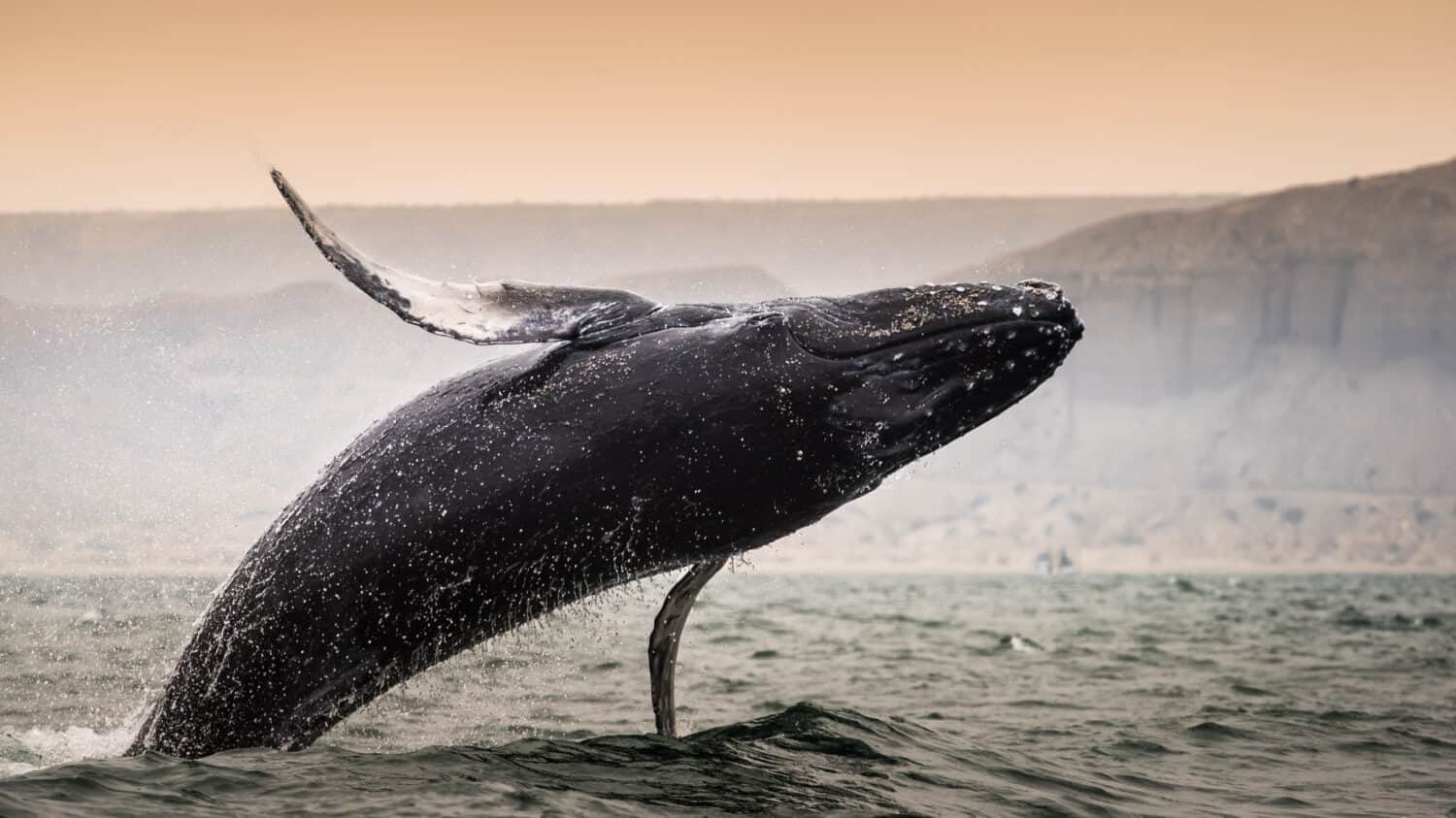Continue reading for our analysis...

This is the most extraordinary encounter between humans and some immense sea creatures. In the clip below, we get to see what is reported as a father and daughter who are kayaking off the coast of Puerto Madryn in Argentina. The whales that they met were fascinated with the kayaks and even gently lifted one out of the water. A once-in-a-lifetime experience!
Where Do Right Whales Live?

Right whales can be spotted throughout the Southern Hemisphere between 20 and 65 degrees south.
©comolok/Shutterstock.com
We are not told in the video notes which type of whale is involved in this interaction but some reports have named them as right whales. This species of whale can be spotted throughout the Southern Hemisphere between 20 degrees and 65 degrees South. These guys also migrate between their high-latitude feeding areas where they spend the austral summer to the lower-latitude breeding grounds in the austral winter. The populations that are found around South America, South Africa, New Zealand, and Australia have been widely documented and studied.
Currently, their populations are endangered and their habitats are threatened by both chemical pollution and climate change. However, they also face physical threats in the ocean including entanglement in fishing gear, disturbance by ocean noise, and vessel strikes.
What Do Right Whales Normally Look Like?

Right whales don’t have dorsal fins but have wide, paddle-shaped flippers.
©wildestanimal/Shutterstock.com
Right whales have a base color of dark grey. You may also have noticed some patches of rougher and thicker skin on these whales. They are called callosities and they are patches of keratinized tissue that are thick and irregular. Males have more than females. Callosities are usually found near the blowhole, rostrum, or on the face near the eyes and mouth. These patches provide habitat for three different species of amphipod crustaceans.
The head of a right whale is almost a third of its entire body size – with a v-shaped blow hole that can be seen up to 16 feet above the surface. The whale is encased in up to 28 inches of blubber – making up almost half of its body mass. These whales are huge – growing as long as 55 feet in length and weighing up to 100 tons. The whales lack dorsal fins but possess wide, paddle-shaped flippers.
What Do Right Whales Eat?

Right whales feed on tiny creatures called krill
©RLS Photo/Shutterstock.com
Right whales are large animals! They can weigh up to 176,000 pounds and grow to between 43 to 56 feet. Their head is large and their bodies are black but they often have a white belly and white chin patches. There is no dorsal fin but their flippers are wide and paddle-shaped. Even though they do not mean humans any harm, they are so big that they could accidentally injure us.
Right whales are baleen whales. They take large quantities of water into their mouths and then force it out past bristly filters called baleens. The right whale’s baleen is angled to capture prey as they swim with their mouths open. Small creatures such as copepods and krill get stuck and then get eaten!
Is it Normal for Right Whales to Tip Boats?

Right whales tend to swim close to shore – making encounters with kayakers more likely.
©Christian Vinces/Shutterstock.com
Right Whales, unlike killer whales that have recently taken pleasure in tipping over boats in the Mediterranean, are not aggressive and do not seek engagement with humans. The kayakers in the video were in waters off the coast of Argentina, a location where the baleen whales are often spotted. The kayakers just happened to find themselves in a pod of whales that were unable to avoid the small boats.
Right whales got their name because they were the preferred or “right” whale to catch for whalers in the early 1900s. They tend to swim slowly, close to shore – as in the video – making them easy prey for sizable whaling vessels with harpoons. The whales, which are now endangered because of these practices, are also so rich in blubber that they float when they are dead. That unfortunate attribute also contributed to their value among the world’s whalers.
Thank you for reading! Have some feedback for us? Contact the AZ Animals editorial team.







